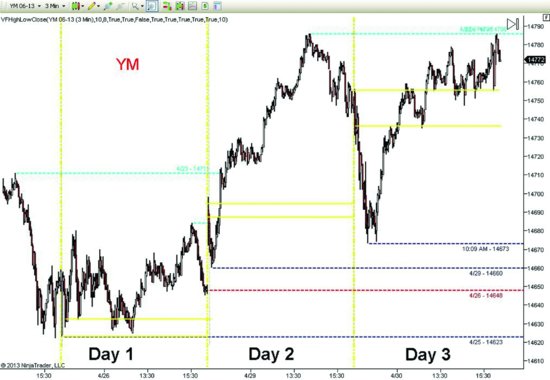CHAPTER 11
Day Model Sequence Cycle
George Douglass Taylor's much-analyzed work, which he referred to as his “Book Method,”1 reveals the observation that the market works in short-term cycles or, stated from another viewpoint, the progress of trends unfolds in waves, each set of waves completing a fractal or segment of the trend. Having studied the Taylor method early in my career, I found I was only able to make it work if I was willing to suspend Taylor's 3-Day Cycle for a day or two completely, and then reinstate it as some fresh, new Buy-Day Low would present itself. With that modification, the 3-Day Cycle often sets up again for another rotation before falling apart once more. Linda Bradford Raschke has apparently made similar adjustments, but nonetheless once stated in a white paper that it was one of her main trading concepts.2
In simplest terms, the cycle consists of a Buy Day, followed the next day with a Sell Day for profit taking and, finally, on the third day, with a Sell Short Day to capitalize on the propensity for a pullback. (See Figure 11.1.)
Figure 11.1 Taylor's 3-Day Cycle

The Sell Short Day of the one 3-Day Cycle can also become the Buy Day of the next, if the correction is deep enough and meets with some reversal criteria at the lows, as seen in Figure 11.1.
The use and understanding of Day Model Patterns is not meant to be derivative of Taylor's work, but ...
Get Pivots, Patterns, and Intraday Swing Trades: Derivatives Analysis with the E-mini and Russell Futures Contracts, + Website now with the O’Reilly learning platform.
O’Reilly members experience books, live events, courses curated by job role, and more from O’Reilly and nearly 200 top publishers.

